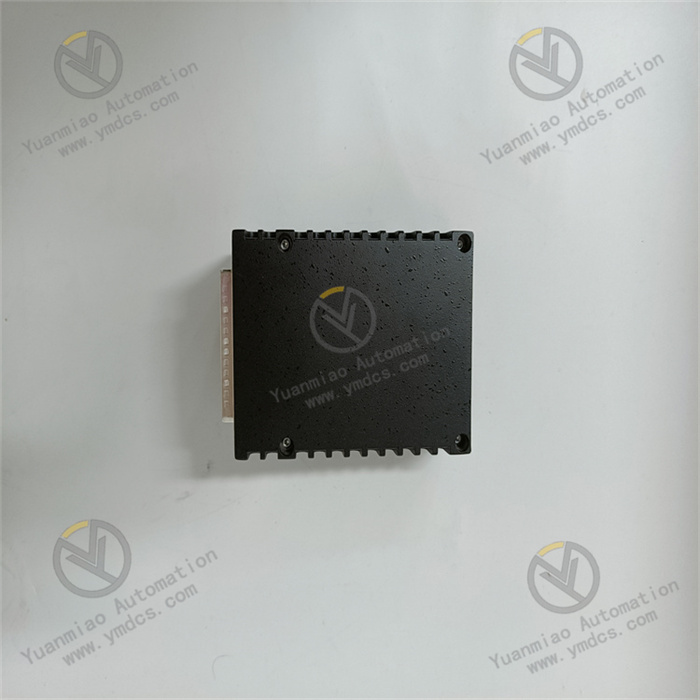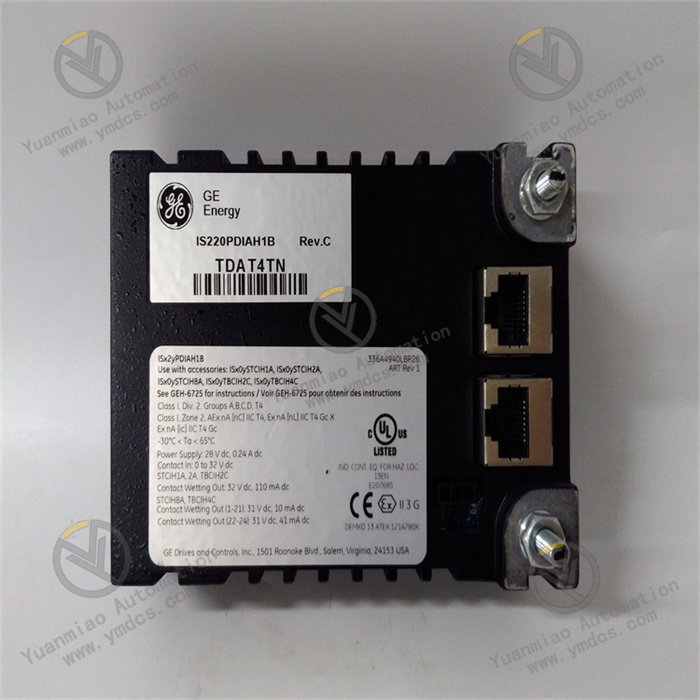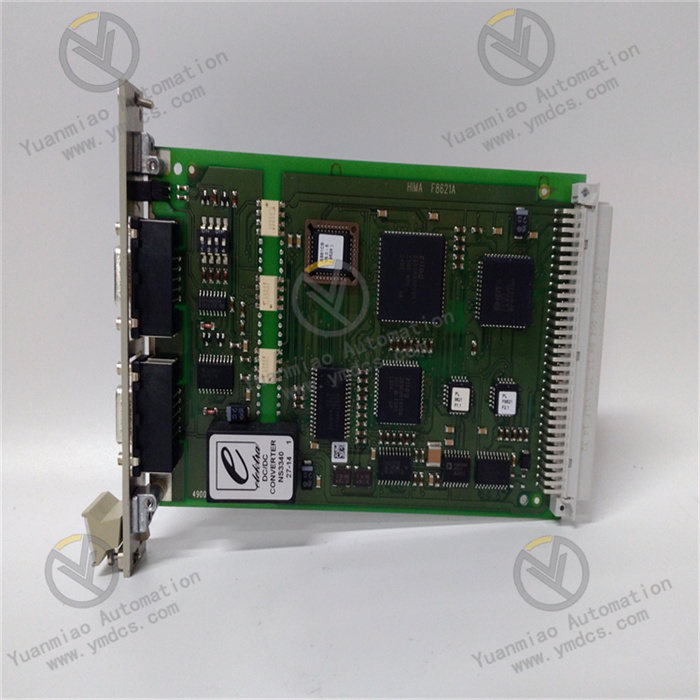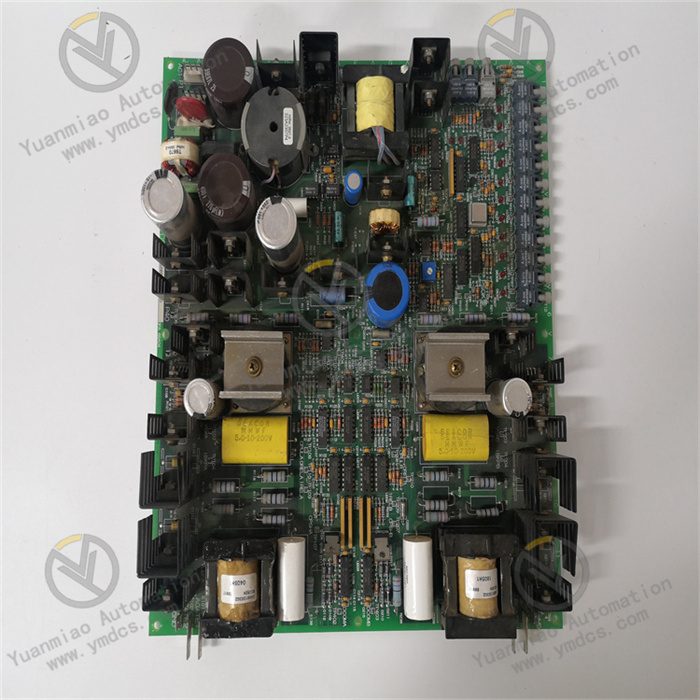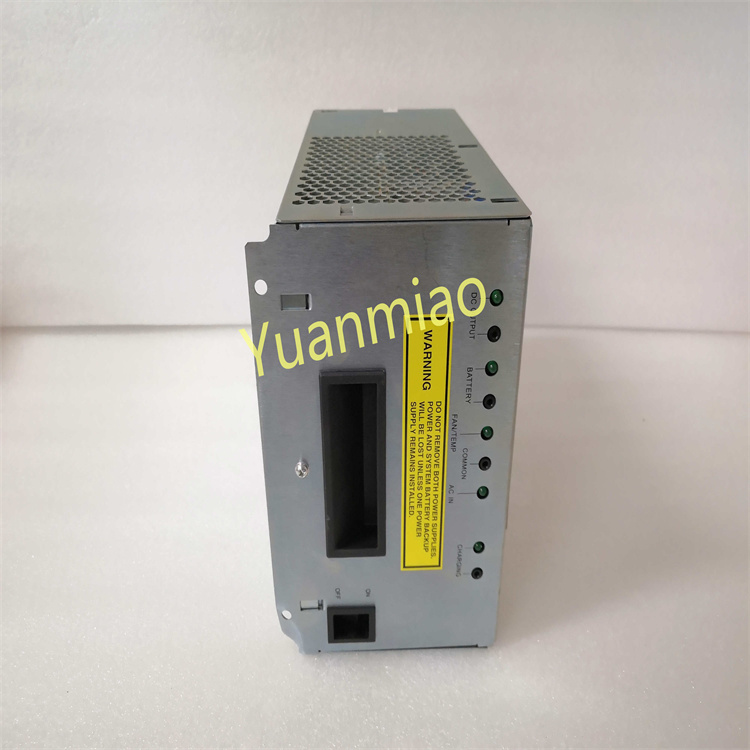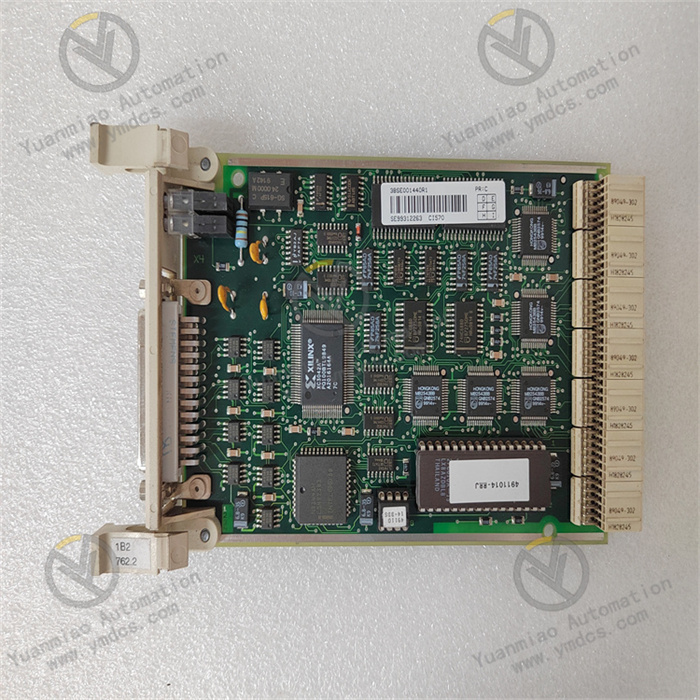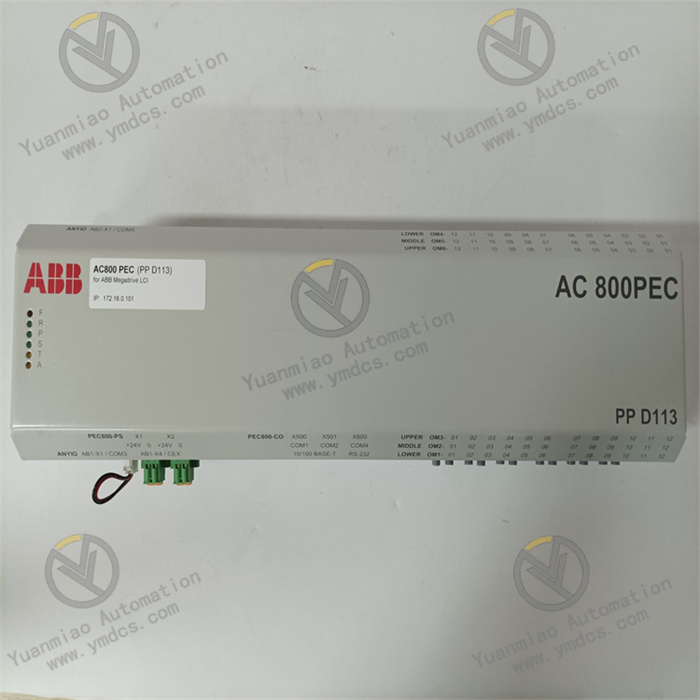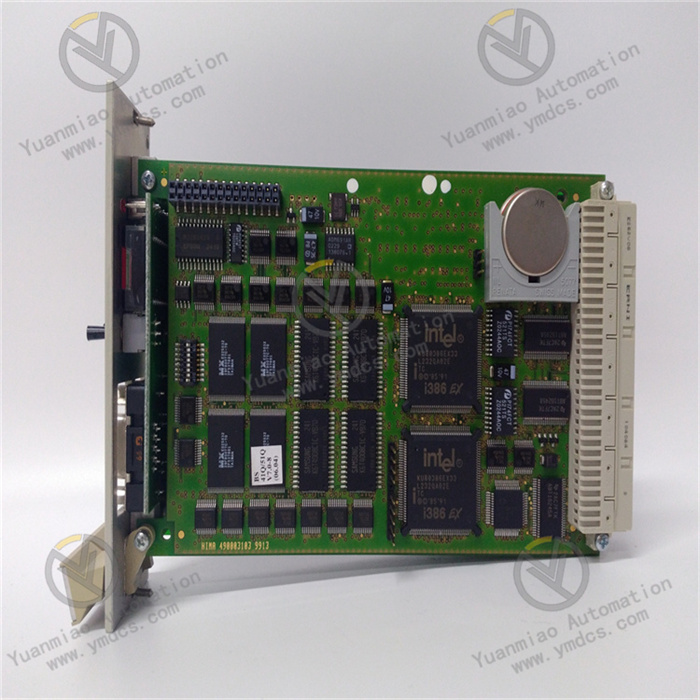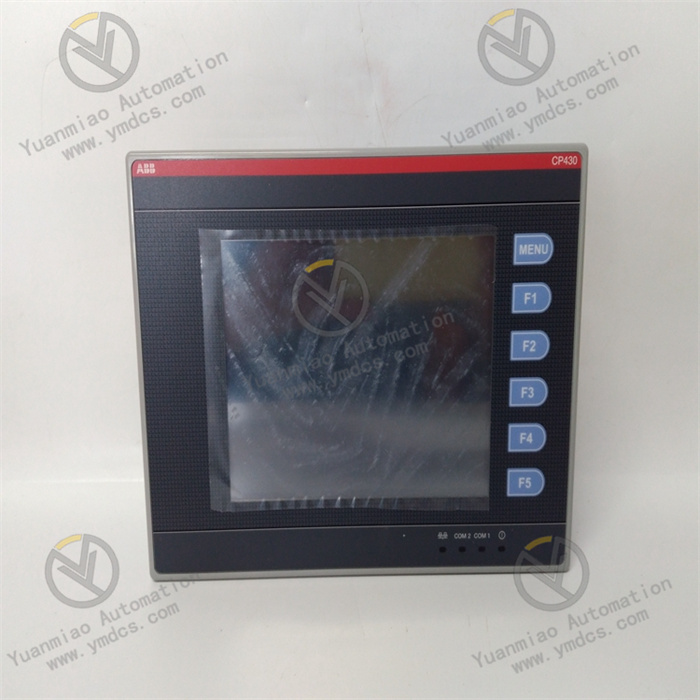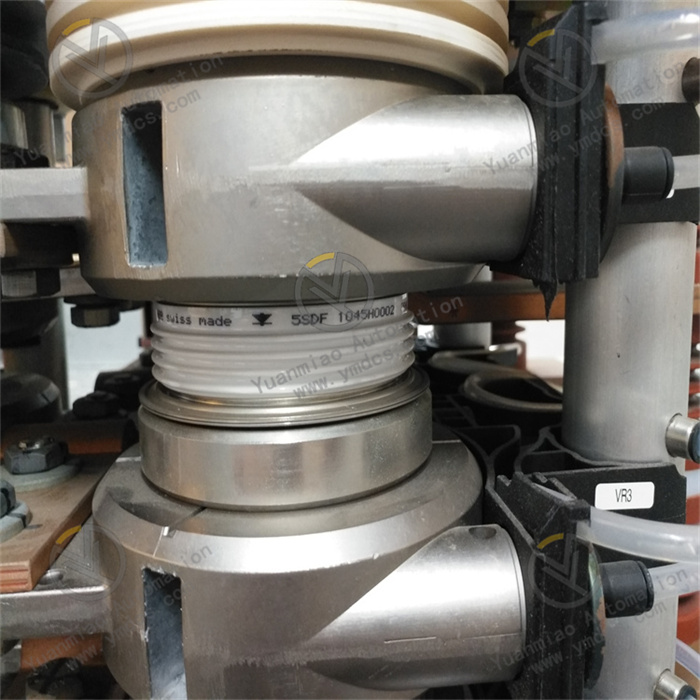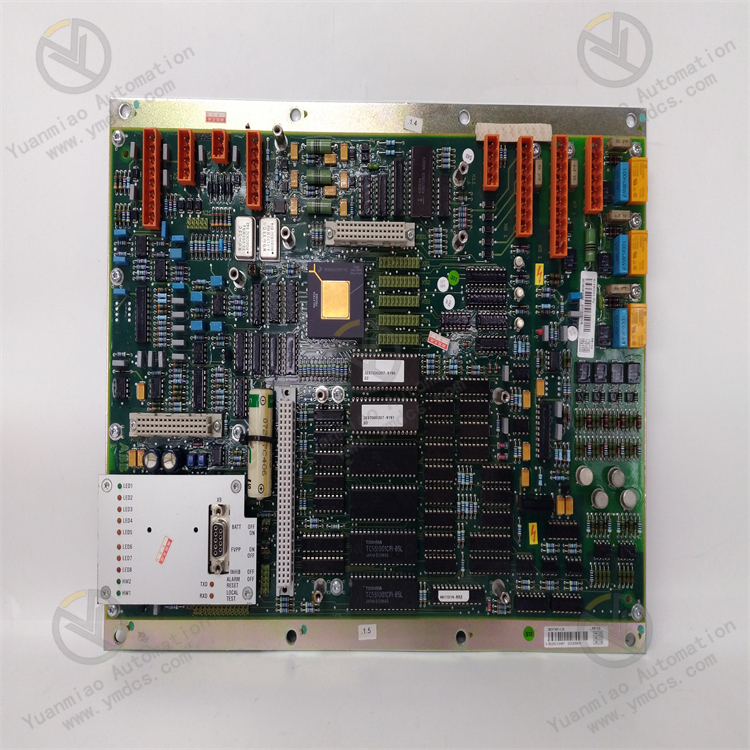Description
GE IS220PDIAH1B
I. Overview
The GE IS220PDIAH1B is a high-channel-density analog input module that must be used in conjunction with Mark VIe main controllers (e.g., IS220PPROH1A), on-site analog sensors (e.g., 4-20mA pressure transmitters, PT100 temperature sensors, 0-10V flow sensors), and system redundant buses (Ionet). Its core functions include:
- Supporting 16 differential analog input channels (compatible with 4-20mA current signals, 0-10V voltage signals, and RTD platinum resistance signals) to achieve synchronous acquisition of multiple parameters;
- Each channel featuring 16-bit resolution, with an acquisition accuracy of ±0.05% FS (for current/voltage signals) and ±0.1°C (for RTD signals), meeting the requirements of precision control;
- Communicating with the main controller via the Ionet industrial bus, with a data transmission rate of ≥100Mbps and a synchronous acquisition error between channels of ≤500μs;
- Incorporating a 32-bit floating-point microprocessor (MCU) that supports signal filtering (adjustable low-pass filter cutoff frequency: 0.1Hz-1kHz), linearization compensation (e.g., nonlinear correction for pressure sensors), and fault self-diagnosis (channel short circuit/overvoltage, communication interruption);
- Boasting a dual redundant design (dual Ionet ports, dual backup for key circuits), ensuring no data loss in case of a single bus or single circuit failure;
- Supporting parameter configuration (e.g., signal range, filtering parameters) and status monitoring via GE Control ST software;
- Adopting an industrial-grade compact design, suitable for installation in standard control cabinets of the Mark VIe system.
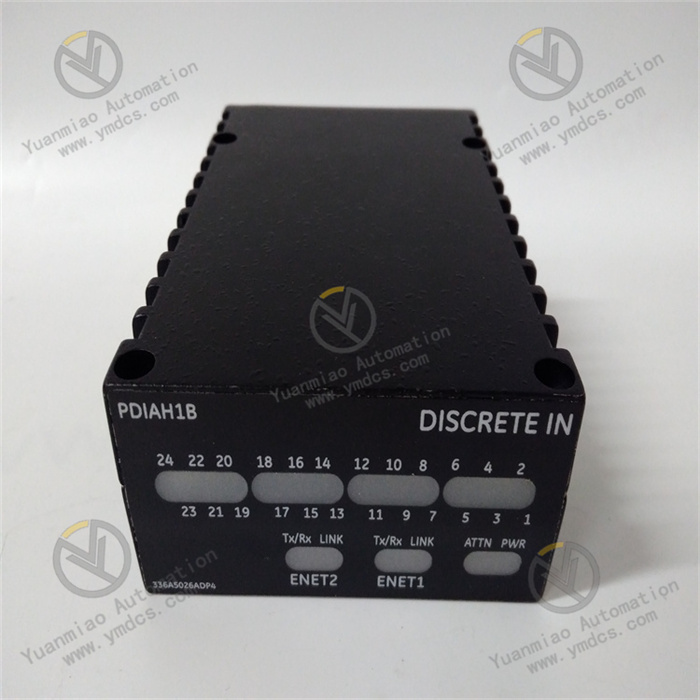
Its core advantages lie in "16 high-density channels, ±0.05% FS high accuracy, ≤500μs synchronous acquisition, and wide temperature adaptability (-20℃~70℃)". It is a core component of the Mark VIe system for realizing multi-parameter precision monitoring of large and medium-sized equipment, and is widely used in control scenarios such as gas turbines, steam turbines, large compressors, and auxiliary equipment of nuclear power units.
The IS220PDIAH1B connects to 8 gas pipeline pressure transmitters (4-20mA), 4 turbine exhaust temperature RTD sensors (PT100), and 4 lubricating oil flow sensors (0-10V) via 16 AI channels. The synchronous acquisition error between channels is ≤300μs, and the pressure acquisition error is ±0.03% FS. This improves the gas turbine fuel regulation accuracy from ±0.5% to ±0.2%, avoiding unit output deviation caused by fuel fluctuations. In the steam turbine pressure monitoring system of a coal-fired power plant, the module connects to the system redundant bus through dual Ionet ports. When the main bus is interrupted due to electromagnetic interference, the backup bus switches within 0.5ms, ensuring no pressure data loss and stable steam turbine pressure control (traditional non-redundant modules require shutdown for recovery, resulting in a single loss of over 500,000 yuan). In the hydraulic control system of a large rolling mill in a metallurgical plant, the module withstands an alternating environment of -15℃ low temperature and 65℃ high temperature, operating continuously for 365 days without faults, with a Mean Time Between Failures (MTBF) of ≥80,000 hours, meeting the "7×24-hour uninterrupted production" requirement of the metallurgical industry. In the auxiliary feedwater system of a nuclear power plant, the module filters out signal noise caused by pump vibration through its signal filtering function (cutoff frequency: 10Hz), increasing the pressure acquisition signal-to-noise ratio from 70dB to 90dB and improving the feedwater flow control accuracy to ±0.5%.
In terms of hardware design, the module adopts a "high-density channel integration + redundant fault tolerance" architecture:
- Analog Acquisition and Signal Processing: It has 16 differential input channels (grouped into sets of 4, each with an independent signal conditioning circuit), compatible with 4-20mA (input impedance: 250Ω), 0-10V (input impedance: ≥1MΩ), and PT100/PT1000 RTD (3-wire/4-wire). Each channel is equipped with a 16-bit Δ-Σ ADC (Analog-to-Digital Converter) with a sampling rate of 1kHz per channel, supporting synchronous sampling (acquisition trigger deviation of 16 channels ≤500μs). All channels feature photoelectric isolation (isolation voltage ≥2kVrms) and electromagnetic shielding (metal shield + twisted-pair input) to avoid on-site electromagnetic interference (e.g., from frequency converters and high-voltage motors). It supports signal conditioning functions (e.g., current signal linearization, RTD lead resistance compensation, low-pass filtering).
- Core Control and Communication Unit: It incorporates a 32-bit ARM Cortex-M7 MCU (operating rate: 200MHz) that supports floating-point operations and can complete real-time data filtering and error compensation for 16 channels. Equipped with 64MB Flash (for storing configuration parameters and calibration data) and 32MB RAM (for caching real-time acquisition data), it supports online firmware upgrades (without interrupting data acquisition). It connects to the system redundant bus through dual Ionet ports, supporting redundant communication with the main controller, with a data transmission delay of ≤5ms.
- Housing and Protection: It uses a die-cast aluminum alloy housing (with anti-corrosion coating, thickness ≥1.5mm) with dimensions of 140mm×175mm×85mm (length × width × height), suitable for installation in standard racks of the Mark VIe system (3U height). It has an IP20 protection rating (dust-proof and finger-touch proof), adapting to the industrial control cabinet environment. The operating temperature range is -20℃~70℃, the storage temperature range is -40℃~85℃, and the relative humidity range is 5%~95% (non-condensing).
- Safety and Redundancy Design: It supports dual Ionet bus redundancy (main and backup buses transmit data synchronously, switching time ≤0.5ms). Key circuits (ADC, MCU, power supply) adopt a dual design to avoid acquisition interruption caused by single-point faults. It is equipped with overvoltage protection (maximum input voltage: 30V DC) and short-circuit protection (response time ≤5μs) to prevent module damage due to sensor faults. It complies with the UL 508 industrial safety standard and CE certification, meeting the safe operation requirements of large and medium-sized equipment.
II. Technical Parameters
1. Analog Acquisition Parameters
| Parameter Category | Specific Specifications (Current/Voltage Signals) | Specific Specifications (RTD Signals) |
|---|---|---|
| Input Channels | 16 differential channels, with independent signal conditioning for every 4 channels, supporting isolation between channels | 16 differential channels (compatible with 3-wire/4-wire PT100/PT1000), with independent RTD excitation circuits for each channel |
| Signal Types | 4-20mA DC (current input), 0-10V DC (voltage input); supports millivolt signals (optional, e.g., -10mV~+10mV) | PT100 (-200℃~600℃), PT1000 (-200℃~850℃); supports Cu50 copper resistance (optional) |
| Resolution | 16-bit (current/voltage signals), minimum detection increment: 0.003% FS | 16-bit, minimum detection increment: 0.01℃ (PT100, -200℃~600℃ range) |
| Acquisition Accuracy | ±0.05% FS (at 25℃, for current/voltage signals), ±0.1% FS (full temperature range of -20℃~70℃) | ±0.1℃ (PT100, 0℃~100℃), ±0.3℃ (PT100, full range of -200℃~600℃) |
| Sampling Rate | 1kHz per channel (configurable via software to 100Hz/200Hz/500Hz/1kHz), synchronous sampling for 16 channels | 500Hz per channel (PT100), 200Hz per channel (PT1000); supports synchronous acquisition between channels (deviation ≤500μs) |
| Signal Conditioning | Supports low-pass filtering (adjustable 0.1Hz-1kHz, -3dB cutoff frequency), linearization compensation (polynomial fitting, up to 10 segments), zero/full-scale calibration | Supports RTD lead resistance compensation (adjustable 0-10Ω, adaptive to 3-wire/4-wire), temperature linearization (compliant with ITS-90 standard) |
2. Communication and Control Performance Parameters
| Parameter Category | Specific Specifications |
|---|---|
| Processor | 32-bit ARM Cortex-M7 MCU, operating rate: 200MHz, supporting hardware floating-point operations and DMA data transmission |
| Communication Interfaces | 2 Ionet industrial buses (redundant), rate: 100Mbps (full-duplex), communication delay ≤5ms (from data acquisition to controller) |
| Data Transmission | Supports cyclic data transmission (real-time acquisition data, transmission cycle ≤1ms) and acyclic data transmission (configuration parameters, fault logs); maximum transmission per frame: 32 bytes (data of 16 channels) |
| Synchronization Performance | Acquisition trigger synchronization error of 16 channels ≤500μs; data synchronization error with other modules (e.g., DO modules) in the Mark VIe system ≤1ms |
| Fault Diagnosis | Supports diagnosis of channel short circuit/overvoltage (alarm when input current >30mA/voltage >12V), RTD open circuit/short circuit, communication interruption, and power supply abnormality; fault response time ≤1ms; alarm methods: bus signal reporting + LED indicators (independent fault light for each channel) |
| Compatibility | Compatible with GE Mark VIe V6.0 and above; requires matching with GE Control ST V05.06 and above; supports direct connection with third-party sensors (e.g., Rosemount pressure transmitters) |
3. Environmental and Reliability Parameters
| Parameter Category | Specific Specifications |
|---|---|
| Operating Temperature | -20℃~70℃ (natural heat dissipation, fanless); storage temperature: -40℃~85℃ |
| Relative Humidity | 5%~95% (non-condensing), compliant with IEC 60068-2-38 humidity cycle standard (2000 hours without failure) |
| Electromagnetic Interference Resistance | Emission: EN 55032 Class B; Immunity: EN 61000-6-2 (ESD ±8kV contact discharge/±15kV air discharge, EFT ±4kV power port/±2kV signal port, RF radiation 30V/m (80MHz~2GHz)) |
| Vibration Resistance | Compliant with IEC 60068-2-6 standard: 10-500Hz, 1g acceleration (continuous operation), no terminal loosening or circuit failure |
| Shock Resistance | Compliant with IEC 60068-2-27 standard: 10g acceleration, 11ms pulse width (half-sine wave), no functional abnormality after shock |
| Power Supply Requirement | 24V DC±20%, maximum power consumption ≤12W (full-load acquisition of 16 channels) |
| Dimensions and Weight | Dimensions: 140mm×175mm×85mm (length × width × height); weight ≤1.8kg |
III. Functional Features
1. 16-Channel High-Density and High-Precision Acquisition for Synchronous Multi-Parameter Monitoring
With "16 differential channels + ±0.05% FS accuracy" as its core, the IS220PDIAH1B addresses the pain points of traditional AI modules, such as "low channel density and insufficient accuracy":
- 16-Channel High-Density Integration: A single module realizes 16-channel analog input, replacing 2 traditional 8-channel AI modules. In a gas turbine control system, the number of modules is reduced from 8 to 4, cutting the control cabinet space occupancy by 50%. It supports compatibility with multiple signal types (current/voltage/RTD). In a steam turbine system, one module simultaneously acquires 8 channels of pressure (4-20mA), 4 channels of temperature (RTD), and 4 channels of flow (0-10V) without additional adapter modules, improving integration efficiency by 40%.
- ±0.05% FS High Precision: The acquisition accuracy of current/voltage signals reaches ±0.05% FS. In the auxiliary feedwater system of a nuclear power plant, the pressure acquisition error is reduced from ±0.2% FS to ±0.03% FS, and the feedwater flow control accuracy is improved to ±0.3%, avoiding system fluctuations caused by parameter deviations. The RTD temperature acquisition accuracy is ±0.1℃. In the bearing temperature monitoring of a metallurgical rolling mill, the error is reduced from ±0.5℃ to ±0.1℃, enabling early warning of bearing overheating 2 hours in advance.
- 500μs Synchronous Acquisition: The 16 channels are triggered for synchronous acquisition with a deviation of ≤500μs. In the multi-stage pressure monitoring of a large compressor, the acquisition synchronization between channels is improved, reducing the pressure gradient calculation error from ±1% to ±0.2% and increasing the compressor anti-surge control response speed by 30%.
2. Robust Anti-Interference Design for Harsh Industrial Environments
In response to electromagnetic, vibration, and temperature interference in large and medium-sized industrial sites, the module ensures acquisition stability through hardware protection:
- Full-Link Electromagnetic Shielding: Photoelectric isolation between channels (2kVrms) + metal housing shielding (shielding effectiveness ≥50dB) + twisted-pair differential input. Near 10kV frequency converters (electromagnetic radiation 50V/m), the signal-to-noise ratio of current signal acquisition is increased from 65dB to 90dB, eliminating signal jumps caused by interference (e.g., instantaneous pressure fluctuations of ±0.5% FS).
- Wide Temperature and Vibration Resistance: It ensures accuracy (±0.1% FS) over the full temperature range of -20℃~70℃, adapting to power plants in northern winters (-15℃) and workshops in southern summers (60℃) with no accuracy attenuation during continuous operation. With 1g vibration resistance (10-500Hz), the fluctuation range of the module's acquisition data is reduced from ±0.3% FS to ±0.05% FS in the vibrating environment of a gas turbine control cabinet.
- Fault Self-Recovery: When a channel experiences a short circuit or overvoltage, the built-in protection circuit (response ≤5μs) automatically cuts off the input and recovers after the fault is eliminated. In a chemical enterprise, when a sensor short-circuited, the module was not damaged—only the faulty channel alarmed, while other channels continued normal acquisition (traditional modules require overall replacement, resulting in a 1-hour shutdown).
3. System Redundancy Compatibility for Uninterrupted Data
To meet the "non-stop" requirement of large and medium-sized equipment, the module is integrated into the fault-tolerant architecture of the Mark VIe system through redundant design:
- Dual Ionet Bus Redundancy: Dual bus ports connect to the system redundant network. When the main bus fails, it switches to the backup bus within 0.5ms. In the steam turbine control system of a thermal power plant, when the main bus was interrupted by lightning, the backup bus took over seamlessly, ensuring no pressure data loss and no unit load reduction (traditional non-redundant modules require shutdown for recovery, resulting in a single loss of over 500,000 yuan).
- Dual Redundancy for Key Circuits: The ADC acquisition circuit and MCU core circuit have dual backups. When a single circuit fails, the backup circuit switches within 0.1ms. In a gas turbine fuel pressure acquisition module, an ADC circuit fault did not affect data output, avoiding fuel regulation inaccuracies.
- Online Hot-Swapping: It supports hot-swapping for module replacement. During the replacement process, the system maintains acquisition through redundant modules. In a power plant, replacing a faulty module online took 8 minutes without affecting boiler control (traditional modules require a 30-minute shutdown).


